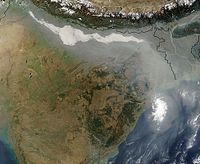
Effect of soil burial on silane treated and untreated kenaf fiber filled linear low-density polyethylene/polyvinyl alcohol composites
Sign Up to like & getrecommendations! Published in 2020 at "Bioresources"
DOI: 10.15376/biores.15.4.8648-8661
Abstract: In recent decades, natural fibers have become widely used with petroleum based polymers such as polyethylene (PE) and polypropylene (PP) because of their light weight, lower cost, and inherent biodegradability. In the present work, linear… read more here.
Keywords: silane treated; silane; soil burial; untreated kenaf ... See more keywords

Evolution of Volatile Aroma Compounds and Amino Acids in Cabernet Gernischt Grape Berries (Vitis vinifera L.): Comparison of Different Training Systems for Mechanical Soil Burial
Sign Up to like & getrecommendations! Published in 2022 at "Foods"
DOI: 10.3390/foods11111568
Abstract: Soil burial is a survival strategy for grapevines that can safely overwinter in north-western regions of China. A suitable training system was beneficial for soil burial to provide winter protection. Moreover, the training system can… read more here.
Keywords: soil burial; cabernet gernischt; training systems; grape berries ... See more keywords

Photo-Oxidative and Soil Burial Degradation of Irrigation Tubes Based on Biodegradable Polymer Blends
Sign Up to like & getrecommendations! Published in 2019 at "Polymers"
DOI: 10.3390/polym11091489
Abstract: Irrigation tubes based on biodegradable polymers were prepared via an extrusion-drawing process by Irritec and compared to conventional pipes made of high-density polyethylene (HDPE). A commercial polylactide/poly (butyleneadipate-co-butyleneterephthalate) (PLA/PBAT) blend (Bio-Flex®) and Mater-Bi® were used.… read more here.
Keywords: degradation; irrigation; burial degradation; irrigation tubes ... See more keywords

Degradation Behavior of 3D-Printed Residue of Astragalus Particle/Poly(Lactic Acid) Biocomposites under Soil Conditions
Sign Up to like & getrecommendations! Published in 2023 at "Polymers"
DOI: 10.3390/polym15061477
Abstract: Astragalus is widely cultivated in China, and the residue of Astragalus particles (ARP) can be used as reinforcements in fused filament-fabricated (FFF) natural fiber/Poly(lactic acid)(PLA) biocomposites. To clarify the degradation behavior of such biocomposites, 3D-printed… read more here.
Keywords: pla; soil burial; residue astragalus; arp pla ... See more keywords